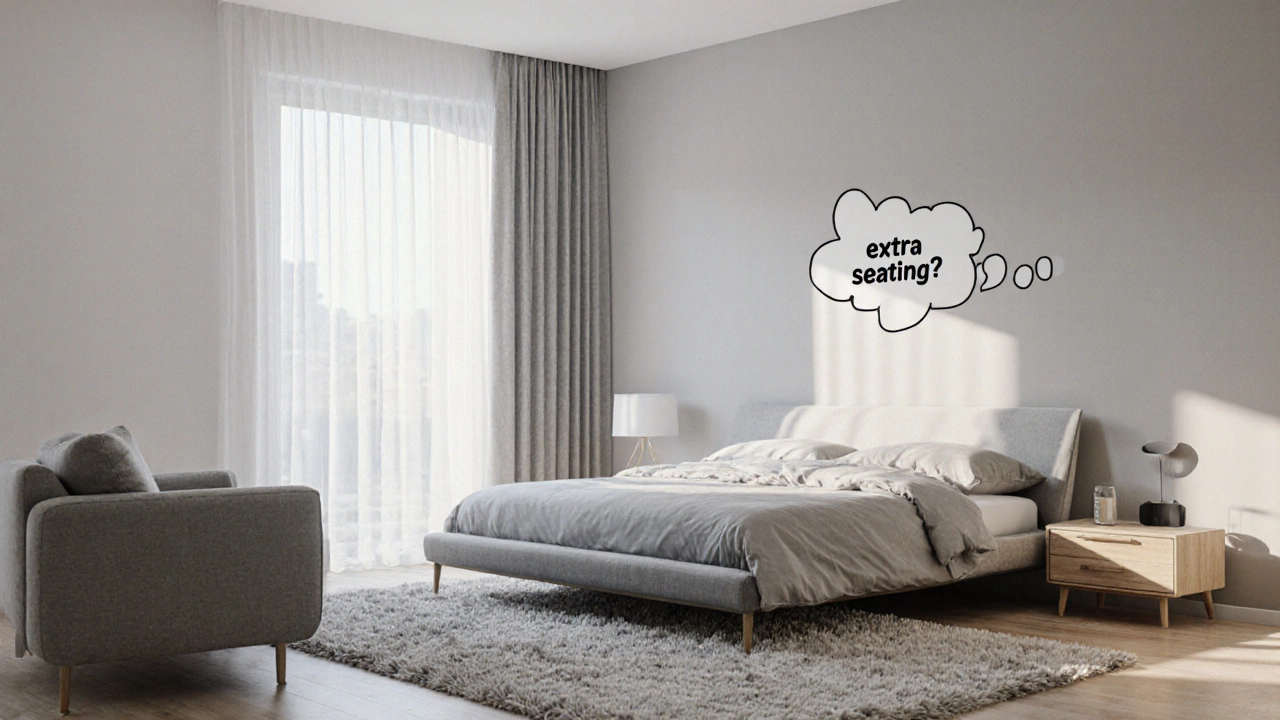
Couch in Bedroom: Pros, Cons & Design Tips
Explore the pros, cons, and design tips for adding a couch to your bedroom. Get practical advice, layout ideas, and a handy checklist to decide if it fits your space.
When planning a Couch in Bedroom, a piece of seating that doubles as a style statement and sometimes a sleeping spot in a sleeping area. Also known as Bedroom couch, it lets you add lounge comfort without crowding the room. This little‑room hero couch in bedroom often needs to juggle sitting, stretching, and storage, so picking the right model matters.
One popular route is the Sofa Bed, a convertible couch that transforms into a full‑size sleeping surface. Sofa beds let you keep a tidy bedroom by folding away the bed at night, which is handy for studios or guest rooms. Another key player is Bedroom Storage, furniture such as built‑in drawers, under‑couch compartments, or wall shelves that keep clothes and accessories out of sight. Pairing a couch with smart storage means you can hide blankets, books, or seasonal items without adding extra pieces.
Beyond a plain sofa bed, a convertible couch offers deeper customization. Some models feature a pull‑out mattress, while others have a click‑clack mechanism that lifts the seat into a bed. The choice depends on how often you need a guest‑ready sleeping area versus a daily lounge spot. If you spend long evenings reading or scrolling, look for a couch with a supportive back and cushions that stay firm. Ergonomic design helps keep your posture in check, especially if you tend to work from the bedroom.
First, measure the floor space. A common mistake is buying a couch that blocks the pathway to the closet or the bathroom. Sketch a simple layout, then place the couch against a wall that doesn’t cut off windows. This placement keeps natural light flowing and makes the room feel larger. Second, pick a low‑profile couch if your ceiling is modest; a tall back can dominate a small room. Third, choose fabrics that match the room’s vibe—neutral tones blend well with most bedroom palettes, while a bold color can become an accent piece without overwhelming the space.
Next, think about multi‑functionality. A couch with built‑in drawers or a hidden compartment acts as extra wardrobe space, reducing the need for a separate chest of drawers. Some bedroom couches even have a small side table integrated into the arm, letting you set a lamp or alarm clock without adding another nightstand. When you combine these features, the couch becomes a hub for relaxation, storage, and occasional sleep.
Finally, consider the overall style flow. If your bedroom leans modern, select a sleek frame with metal legs and a minimalist silhouette. For a cozier, cottage feel, a rounded, plush couch with soft, breathable linen works best. Matching the couch’s legs to the bed’s frame or the dresser’s metal hardware can tie the room together. Remember, a well‑chosen couch can make a bedroom feel like a small living area without sacrificing sleep quality.
Below you’ll find a curated list of articles that dive deeper into each of these ideas—from picking the right sofa bed to maximizing bedroom storage, from ergonomic seating tips to the latest color trends for bedroom couches. Use the guides to fine‑tune your space, and you’ll turn a simple couch into the centerpiece of a comfortable, functional bedroom.

Explore the pros, cons, and design tips for adding a couch to your bedroom. Get practical advice, layout ideas, and a handy checklist to decide if it fits your space.